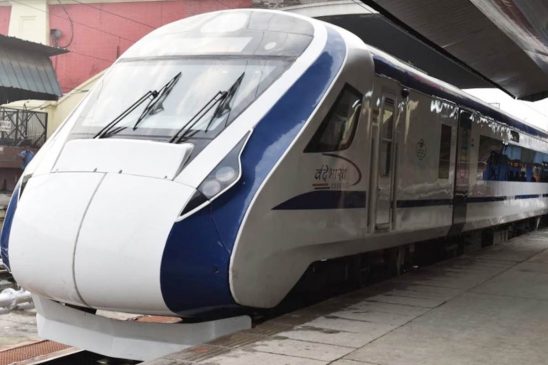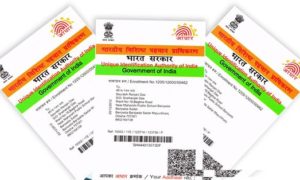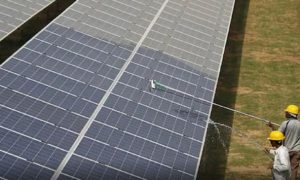During the journey, as the train approached Sholaka station, it encountered a red signal preceding Hodal station. Operating at a brisk 160 kmph, the armor system promptly detected the signal and automatically applied brakes approximately 1,300 meters ahead.
Palwal – Vrindavan Vande Bharat Train Route: Railway Board Chairperson and CEO Jaya Verma Sinha, alongside senior officials from North Central and Northern Railways, conducted a thorough inspection of the ‘Railway Kavach’ trial aboard the Vande Bharat train between Palwal and Vrindavan. Sinha experienced firsthand the functioning of the armor system while traveling aboard the eight-coach Vande Bharat train, which cruised at a swift 160 kilometers per hour. The trial, conducted under the overall supervision of Kush Gupta, Deputy Chief Signal and Telecommunication Engineer, was successful as the train stopped at red signals on its own with the help of Indian Railways Kavach System.
The train followed all speed restrictions with the help of Kavach without the loco pilot’s interference. For instance, it was supposed to slow down to 30 kmph to enter the loop line near Chhata, one of the stations on the Palwal-Vridavan route, which it did in quite a precise manner.
“The train adhered to all speed restrictions seamlessly with the assistance of ‘Kavach,’ without requiring intervention from the loco pilot,” said Prashasti Srivastava, the Public Relations Officer of Agra Railway Division.
Read More: Is ITR Filing Mandatory For Senior Citizens? Here’s All You Need To Know
“For instance, as the train approached the loop line near Chhata station on the Palwal-Vridavan railway route, it accurately adjusted its speed, maintaining the required pace.”
During the journey, as the train approached Sholaka station, it encountered a red signal preceding Hodal station. Operating at a brisk 160 kmph, the armor system promptly detected the signal and automatically applied brakes approximately 1,300 meters ahead.
What is Indian Railways’ Kavach system?
The Kavach system, developed by the Research Designs and Standards Organisation (RDSO), a groundbreaking technology that automatically applies brakes during emergencies if a train driver fails to respond promptly. Notably, the 125-km track between Delhi and Agra stands out as the lone section in India’s rail network where trains can reach speeds of up to 160 kmph, surpassing the standard 130 kmph limit on other routes.
Read More: How to lock and unlock Aadhaar for protection against fraud: A step-by-step guide
This exceptional track was initially constructed for the Gatimaan Express, India’s first semi-high-speed train, inaugurated in April 2016. The Kavach system marks a significant advancement in ensuring passenger safety and operational efficiency.





































